Value-Based Decision to Redevelop Transportation Facilities: A Case Study of an Abandoned Airport
Abstract
1. Introduction
2. Literature Review
2.1. Value-Based Decision Making for Redevelopment
2.2. Reviews to Previous Case Studies of Decision Making in the Redevelopment Project
2.2.1. Old Equipment Repair Factory in Vilnius
2.2.2. Pier Arts Centre in Scotland
2.2.3. Villages in the City (ViCs) in Shen Zhen
2.2.4. Abandoned Railway Lines in Italy
2.3. Criteria for Redevelopment Decision Making
3. Methodology
4. Results
4.1. Pilot Study
4.2. Survey 1: Prioritising the Decision Criteria
4.3. Evaluation of Best Alternative Using AHP
4.3.1. Best Alternative Selected by Respondent 1
4.3.2. Best Alternative Selected by Respondent 2
4.3.3. Best Alternative Selected by Respondent 3
4.3.4. Best Alternative Selected by Respondent 4
4.3.5. Best Alternative Selected by Respondent 5
4.3.6. Best Alternative Selected by All Respondents
4.3.7. Criteria of Cost
4.3.8. Integrated Perspective on AHP Model
4.4. Validation of Criteria through Previous Studies
4.5. Empirical Validation
5. Conclusions
Author Contributions
Funding
Acknowledgments
Conflicts of Interest
Appendix A. Details of AHP Matrix
Appendix A.1. Respondent 1
| f1 | f2 | f3 | f4 | f5 | |
|---|---|---|---|---|---|
| f1 | 1 | 0.142857 | 0.166667 | 0.125 | 4 |
| f2 | 7 | 1 | 7 | 0.125 | 7 |
| f3 | 6 | 0.142857 | 1 | 0.142857 | 7 |
| f4 | 8 | 8 | 7 | 1 | 7 |
| f5 | 0.25 | 0.142857 | 0.142857 | 0.142857 | 1 |
| a1 | a2 | a3 | |
|---|---|---|---|
| a1 | 1 | 0.166667 | 6 |
| a2 | 6 | 1 | 7 |
| a3 | 0.166667 | 0.142857 | 1 |
| a1 | a2 | a3 | |
|---|---|---|---|
| a1 | 1 | 0.166667 | 0.2 |
| a2 | 6 | 1 | 6 |
| a3 | 5 | 0.166667 | 1 |
| a1 | a2 | a3 | |
|---|---|---|---|
| a1 | 1 | 8 | 7 |
| a2 | 0.125 | 1 | 0.166667 |
| a3 | 0.142857 | 6 | 1 |
| a1 | a2 | a3 | |
|---|---|---|---|
| a1 | 1 | 0.142857 | 7 |
| a2 | 7 | 1 | 7 |
| a3 | 0.142857 | 0.142857 | 1 |
| a1 | a2 | a3 | |
|---|---|---|---|
| a1 | 1 | 0.166667 | 6 |
| a2 | 6 | 1 | 5 |
| a3 | 0.166667 | 0.2 | 1 |
Appendix A.2. Respondent 2
| f1 | f2 | f3 | f4 | f5 | |
|---|---|---|---|---|---|
| f1 | 1 | 0.142857 | 0.333333 | 0.5 | 4 |
| f2 | 7 | 1 | 8 | 7 | 7 |
| f3 | 3 | 0.125 | 1 | 0.5 | 4 |
| f4 | 2 | 0.142857 | 2 | 1 | 5 |
| f5 | 0.25 | 0.142857 | 0.25 | 0.2 | 1 |
| a1 | a2 | a3 | |
|---|---|---|---|
| a1 | 1 | 5 | 6 |
| a2 | 0.2 | 1 | 5 |
| a3 | 0.166667 | 0.2 | 1 |
| a1 | a2 | a3 | |
|---|---|---|---|
| a1 | 1 | 7 | 7 |
| a2 | 0.142857 | 1 | 6 |
| a3 | 0.142857 | 0.166667 | 1 |
| a1 | a2 | a3 | |
|---|---|---|---|
| a1 | 1 | 6 | 7 |
| a2 | 0.166667 | 1 | 7 |
| a3 | 0.142857 | 0.142857 | 1 |
| a1 | a2 | a3 | |
|---|---|---|---|
| a1 | 1 | 7 | 7 |
| a2 | 0.142857 | 1 | 6 |
| a3 | 0.142857 | 0.166667 | 1 |
| a1 | a2 | a3 | |
|---|---|---|---|
| a1 | 1 | 5 | 6 |
| a2 | 0.2 | 1 | 0.333333 |
| a3 | 0.166667 | 3 | 1 |
Appendix A.3. Respondent 3
| f1 | f2 | f3 | f4 | f5 | |
|---|---|---|---|---|---|
| f1 | 1 | 0.111111 | 0.166667 | 5 | 7 |
| f2 | 9 | 1 | 9 | 9 | 9 |
| f3 | 6 | 0.111111 | 1 | 6 | 6 |
| f4 | 0.2 | 0.111111 | 0.166667 | 1 | 7 |
| f5 | 0.142857 | 0.111111 | 0.166667 | 0.142857 | 1 |
| a1 | a2 | a3 | |
|---|---|---|---|
| a1 | 1 | 7 | 7 |
| a2 | 0.142857 | 1 | 0.2 |
| a3 | 0.142857 | 5 | 1 |
| a1 | a2 | a3 | |
|---|---|---|---|
| a1 | 1 | 6 | 6 |
| a2 | 0.166667 | 1 | 0.25 |
| a3 | 0.166667 | 4 | 1 |
| a1 | a2 | a3 | |
|---|---|---|---|
| a1 | 1 | 7 | 4 |
| a2 | 0.142857 | 1 | 0.333333 |
| a3 | 0.25 | 3 | 1 |
| a1 | a2 | a3 | |
|---|---|---|---|
| a1 | 1 | 7 | 3 |
| a2 | 0.142857 | 1 | 0.2 |
| a3 | 0.333333 | 5 | 1 |
| a1 | a2 | a3 | |
|---|---|---|---|
| a1 | 1 | 2 | 3 |
| a2 | 0.5 | 1 | 0.333333 |
| a3 | 0.333333 | 3 | 1 |
Appendix A.4. Respondent 4
| f1 | f2 | f3 | f4 | f5 | |
|---|---|---|---|---|---|
| f1 | 1 | 0.142857 | 0.166667 | 7 | 7 |
| f2 | 7 | 1 | 0.125 | 7 | 8 |
| f3 | 6 | 8 | 1 | 8 | 8 |
| f4 | 0.142857 | 0.142857 | 0.125 | 1 | 8 |
| f5 | 0.142857 | 0.125 | 0.125 | 0.125 | 1 |
| a1 | a2 | a3 | |
|---|---|---|---|
| a1 | 1 | 8 | 0.111111 |
| a2 | 0.125 | 1 | 0.111111 |
| a3 | 9 | 9 | 1 |
| a1 | a2 | a3 | |
|---|---|---|---|
| a1 | 1 | 8 | 0.111111 |
| a2 | 0.125 | 1 | 0.111111 |
| a3 | 9 | 9 | 1 |
| a1 | a2 | a3 | |
|---|---|---|---|
| a1 | 1 | 9 | 0.111111 |
| a2 | 0.111111 | 1 | 0.111111 |
| a3 | 9 | 9 | 1 |
| a1 | a2 | a3 | |
|---|---|---|---|
| a1 | 1 | 9 | 0.125 |
| a2 | 0.111111 | 1 | 0.125 |
| a3 | 8 | 8 | 1 |
| a1 | a2 | a3 | |
|---|---|---|---|
| a1 | 1 | 8 | 0.125 |
| a2 | 0.125 | 1 | 0.125 |
| a3 | 8 | 8 | 1 |
Appendix A.5. Respondent 5
| f1 | f2 | f3 | f4 | f5 | |
|---|---|---|---|---|---|
| f1 | 1 | 8 | 7 | 8 | 8 |
| f2 | 0.125 | 1 | 7 | 0.125 | 7 |
| f3 | 0.142857 | 0.142857 | 1 | 0.125 | 7 |
| f4 | 0.125 | 8 | 8 | 1 | 8 |
| f5 | 0.125 | 0.142857 | 0.142857 | 0.125 | 1 |
| a1 | a2 | a3 | |
|---|---|---|---|
| a1 | 1 | 8 | 7 |
| a2 | 0.125 | 1 | 0.125 |
| a3 | 0.142857 | 8 | 1 |
| a1 | a2 | a3 | |
|---|---|---|---|
| a1 | 1 | 8 | 0.142857 |
| a2 | 0.125 | 1 | 0.125 |
| a3 | 7 | 8 | 1 |
| a1 | a2 | a3 | |
|---|---|---|---|
| a1 | 1 | 7 | 8 |
| a2 | 0.142857 | 1 | 0.125 |
| a3 | 0.125 | 8 | 1 |
| a1 | a2 | a3 | |
|---|---|---|---|
| a1 | 1 | 8 | 8 |
| a2 | 0.125 | 1 | 0.125 |
| a3 | 0.125 | 8 | 1 |
| a1 | a2 | a3 | |
|---|---|---|---|
| a1 | 1 | 8 | 7 |
| a2 | 0.125 | 1 | 0.125 |
| a3 | 0.142857 | 8 | 1 |
References
- Hassan, A.M.; Lee, H. Toward the sustainable development of urban areas: An overview of global trends in trials and policies. Land Use Policy 2015, 48, 199–212. [Google Scholar] [CrossRef]
- Thomas, M.R. A GIS-based decision support system for brownfield redevelopment. Landsc. Urban Plan. 2002, 58, 7–23. [Google Scholar] [CrossRef]
- Ferdinand, A.V.; Yu, D. Sustainable Urban Redevelopment: Assessing the Impact of Third-Party Rating Systems. J. Urban Plan. Dev. 2016, 142, 05014033. [Google Scholar] [CrossRef]
- Pavlovskis, M.; Antucheviciene, J.; Migilinskas, D. Application of MCDM and BIM for Evaluation of Asset Redevelopment Solutions. Stud. Inform. Control. 2016, 25, 293–302. [Google Scholar] [CrossRef]
- Assavavipapan, K.; Opasanon, S. Thailand transportation infrastructure performance and the economics. Asia Pac. J. Mark. Logist. 2016, 28, 923–938. [Google Scholar] [CrossRef]
- Wang, W.; Zhou, Z.; Chen, J.; Cheng, W.; Chen, J. Analysis of Location Selection of Public Service Facilities Based on Urban Land Accessibility. Int. J. Environ. Res. Public Health 2021, 18, 516. [Google Scholar] [CrossRef]
- Noichan, R.; Dewancker, B. Analysis of Accessibility in an Urban Mass Transit Node: A Case Study in a Bangkok Transit Station. Sustainability 2018, 10, 4819. [Google Scholar] [CrossRef]
- Leber, M.; Bastič, M.; Mavrič, M.; Ivanišević, A. Value Analysis as an Integral Part of New Product Development. Procedia Eng. 2014, 69, 90–98. [Google Scholar] [CrossRef][Green Version]
- Utomo, C.; Rahmawati, Y.; Pararta, D.L.; Ariesta, A. Collaborative Decision Model on Stockpile Material of a Traditional Market Infrastructure using Value-Based HBU. IOP Conf. Ser. Mater. Sci. Eng. 2017, 267, 012024. [Google Scholar] [CrossRef]
- Hoe, K.C.; Abd Wahab, H.; Bakar, S.H.A.; Islam, M.R. Community participation for rural poverty alleviation: A case of the Iban community in Malaysia. Int. Soc. Work 2018, 61, 518–536. [Google Scholar] [CrossRef]
- Sanggin, S.; Mersat, N. Indigenous People’s Participation in Land Development Project in Selected Areas of Sarawak. OIDA Int. J. Sustain. Dev. 2012, 3, 67–80. [Google Scholar]
- Chia, Y.S. The History of Kapit Airport. Malays. Dly. News 2007. [Google Scholar]
- Wong, S. Market Gardening as a Livelihood Strategy: A Case Study of Rural-Urban Migrants in Kapit, Sarawak, Malaysia; Victoria University of Wellington: Wellington, New Zealand, 2005. [Google Scholar]
- Borneo Post Online New Hospital Planned for Kapit at Old Airport Site. Available online: https://www.theborneopost.com/2020/07/05/new-hospital-planned-for-kapit-at-old-airport-site/ (accessed on 5 August 2020).
- Hawkins, D.; Mumovic, D. Evaluation of life cycle carbon impacts for higher education building redevelopment: A multiple case study approach. Energy Build. 2017, 150, 507–515. [Google Scholar] [CrossRef]
- Wang, Y.; Li, L.; Zhu, X.; Wu, B.; Li, L. Evaluation of urban redevelopment impact on non-motorized traffic. J. Traffic Transp. Eng. 2015, 2, 187–197. [Google Scholar] [CrossRef]
- Alias, A.; Yusoff, W.Z.W.; Samad, Z.A. The Financial Evaluation of Transportation Project in Malaysia: A Case Study of Putrajaya Monorail Transit System. Int. Symp. Adv. Constr. Manag. Real Estate 2009, 1–6, 2497–2507. [Google Scholar]
- Utomo, C.; Rahmawati, Y. Agreement options for negotiation on material location decision of housing development. Constr. Innov. 2020, 20, 209–222. [Google Scholar] [CrossRef]
- Lee, H. Study on the Characteristics of New Towns and the Redevelopment of Project-Canceled Areas: A Case Study of Seoul, South Korea. Sustainability 2019, 11, 5733. [Google Scholar] [CrossRef]
- Pica, M. Project Life Cycle Economics; Routledge: London, UK, 2016; ISBN 9781315602387. [Google Scholar]
- Utomo, C.; Suhartono; Rahmawati, Y. A Concept of Value and Sustainable Performance On Affordable High-Rise Residential Decision. MATEC Web Conf. 2018, 203, 02013. [Google Scholar] [CrossRef]
- Santos, J.; Ferreira, A. Life-cycle cost analysis system for pavement management at project level. Int. J. Pavement Eng. 2013, 14, 71–84. [Google Scholar] [CrossRef]
- Khan, M.W.; Ali, Y. Sustainable construction. Constr. Innov. 2020, 20, 191–207. [Google Scholar] [CrossRef]
- Zhong, J.; Hui, E.C.M. Depreciation, Building Age, and Market Price Statistics for Reference in Urban Redevelopment Option Pricing. J. Urban Plan. Dev. 2020, 146, 04019031. [Google Scholar] [CrossRef]
- Green, T.L. Evaluating predictors for brownfield redevelopment. Land Use Policy 2018, 73, 299–319. [Google Scholar] [CrossRef]
- Wadu Mesthrige, J.; Wong, J.K.W.; Yuk, L.N. Conversion or redevelopment? Effects of revitalization of old industrial buildings on property values. Habitat Int. 2018, 73, 53–64. [Google Scholar] [CrossRef]
- Wang, F.; Liu, C.; Mackillop, F.; Ganguly, S.; Henderson, C.; Flanagan, S. Building redevelopment as a catalyst for sustainability?—Assessing the renovation of the Pier Arts Centre, along technical, social and economic sustainability indicators. Sustain. Cities Soc. 2018, 42, 370–383. [Google Scholar] [CrossRef]
- Cox, L.; Bassi, A.; Kolling, J.; Procter, A.; Flanders, N.; Tanners, N.; Araujo, R. Exploring synergies between transit investment and dense redevelopment: A scenario analysis in a rapidly urbanizing landscape. Landsc. Urban Plan. 2017, 167, 429–440. [Google Scholar] [CrossRef] [PubMed]
- Liu, Y.; Tang, S.; Geertman, S.; Lin, Y.; van Oort, F. The chain effects of property-led redevelopment in Shenzhen: Price-shadowing and indirect displacement. Cities 2017, 67, 31–42. [Google Scholar] [CrossRef]
- Ferretti, V.; Degioanni, A. How to support the design and evaluation of redevelopment projects for disused railways? A methodological proposal and key lessons learned. Transp. Res. Part D Transp. Environ. 2017, 52, 29–48. [Google Scholar] [CrossRef]
- Zhuang, H.; Zhang, J.; Cb, S.; Muthu, B.A. Sustainable Smart City Building Construction Methods. Sustainability 2020, 12, 4947. [Google Scholar] [CrossRef]
- Rahmawati, Y.; Utomo, C.; Muhamad Sukri, N.S.; Yasinta, R.B.; Al-Aidrous, A.-H.M.H. Environmental Enhancement through High-Rise Building Refurbishment. Sustainability 2020, 12, 9350. [Google Scholar] [CrossRef]
- Shahid, S.; Minhans, A.; Che Puan, O. Assessment of Greenhouse Gas Emission Reduction Measures in Transportation Sector of Malaysia. J. Teknol. 2014, 70. [Google Scholar] [CrossRef]
- Kumar, A.; Aswin, A.; Gupta, H. Evaluating green performance of the airports using hybrid BWM and VIKOR methodology. Tour. Manag. 2020, 76, 103941. [Google Scholar] [CrossRef]
- Lima, J.P.; Abitante, J.d.C.; Dias Pons, N.A.; Senne, C.M. A spatial fuzzy multicriteria analysis of accessibility: A case study in Brazil. Sustainability 2019, 11, 3407. [Google Scholar] [CrossRef]
- Bakogiannis, E.; Vlastos, T.; Athanasopoulos, K.; Vassi, A.; Christodoulopoulou, G.; Karolemeas, C.; Tsigdinos, S.; Kyriakidis, C.; Noutsou, M.-S.; Siti, M.; et al. Exploring Motivators and Deterrents of Cycling Tourism Using Qualitative Social Research Methods and Participative Analytical Hierarchy Process (AHP). Sustainability 2020, 12, 2418. [Google Scholar] [CrossRef]
- Hussain Mirjat, N.; Uqaili, M.; Harijan, K.; Mustafa, M.; Rahman, M.; Khan, M. Multi-Criteria Analysis of Electricity Generation Scenarios for Sustainable Energy Planning in Pakistan. Energies 2018, 11, 757. [Google Scholar] [CrossRef]
- Malaysia National Health Accounts. Malaysia National Health Account Health Expenditure Report 1997–2017; Malaysia National Health Accounts (MNHA) Section: Putrajaya, Malaysia, 2019. [Google Scholar]
- Jiao, J.; Rollo, J.; Fu, B. The Hidden Characteristics of Land-Use Mix Indices: An Overview and Validity Analysis Based on the Land Use in Melbourne, Australia. Sustainability 2021, 13, 1898. [Google Scholar] [CrossRef]
- Chang, S.E.; Kuo, M.-Y. A Place-Based Pedagogical Action Study to Enrich Rural Sustainability: Knowledge Ties of National Taiwan University’s 10-Year Partnership with Pinglin. Sustainability 2021, 13, 2916. [Google Scholar] [CrossRef]
- Yeh, J.H.; Lin, S.; Lai, S.; Huang, Y.; Yi-fong, C.; Lee, Y.; Berkes, F. Taiwanese Indigenous Cultural Heritage and Revitalization: Community Practices and Local Development. Sustainability 2021, 13, 1799. [Google Scholar] [CrossRef]
- Khalil, I.U.; Hena, S.; Ghani, U.; Ullah, R.; Jan, I.; Rauf, A.; Rehman, A.; Abbas, A.; Jingdong, L. Development and Sustainability of Rural Economy of Pakistan through Local Community Support for CPEC. Sustainability 2021, 13, 686. [Google Scholar] [CrossRef]
- Rodriguez, R.; Otero-Neira, C.; Svensson, G. Sustainability endeavors and sustainable development in Spanish public hospitals. J. Soc. Mark. 2020, 10, 215–242. [Google Scholar] [CrossRef]
- Arcadis. JUBM & Arcadis Construction Cost Handbook MALAYSIA 2020; JUBM & Arcadis: Selangor, Malaysia, 2020. [Google Scholar]
- Nurcahyo, R.; Farizal, F.; Arifianto, B.M.I.; Habiburrahman, M. Mass Rapid Transit Operation and Maintenance Cost Calculation Model. J. Adv. Transp. 2020, 2020, 1–6. [Google Scholar] [CrossRef]
- Kananatu, K. Healthcare Financing in Malaysia. Asia Pac. J. Public Health 2002, 14, 23–28. [Google Scholar] [CrossRef] [PubMed]
- Ministry of Health Malaysia. Health Facts 2018 (Reference Data for 2017); Ministry of Health Malaysia: Putrajaya, Malaysia, 2018. [Google Scholar]
- Rahmawati, Y.; Utomo, C. Value-based decision for highest and best use. In Proceedings of the 2017 International Conference on Engineering Technology and Technopreneurship (ICE2T), Kuala Lumpur, Malaysia, 18–20 September 2017; IEEE: Red Hook, NY, USA, 2017; pp. 1–5. [Google Scholar]
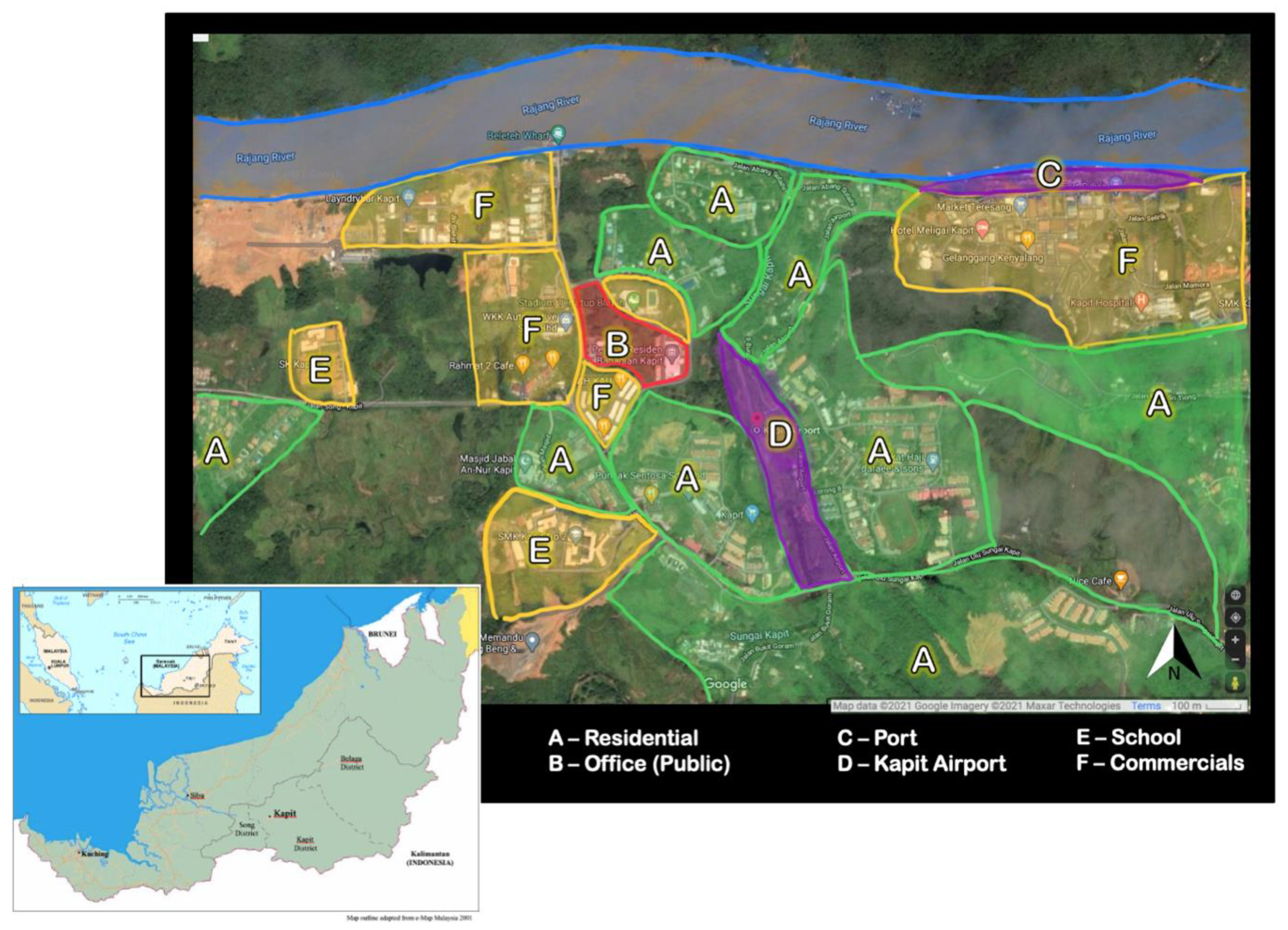

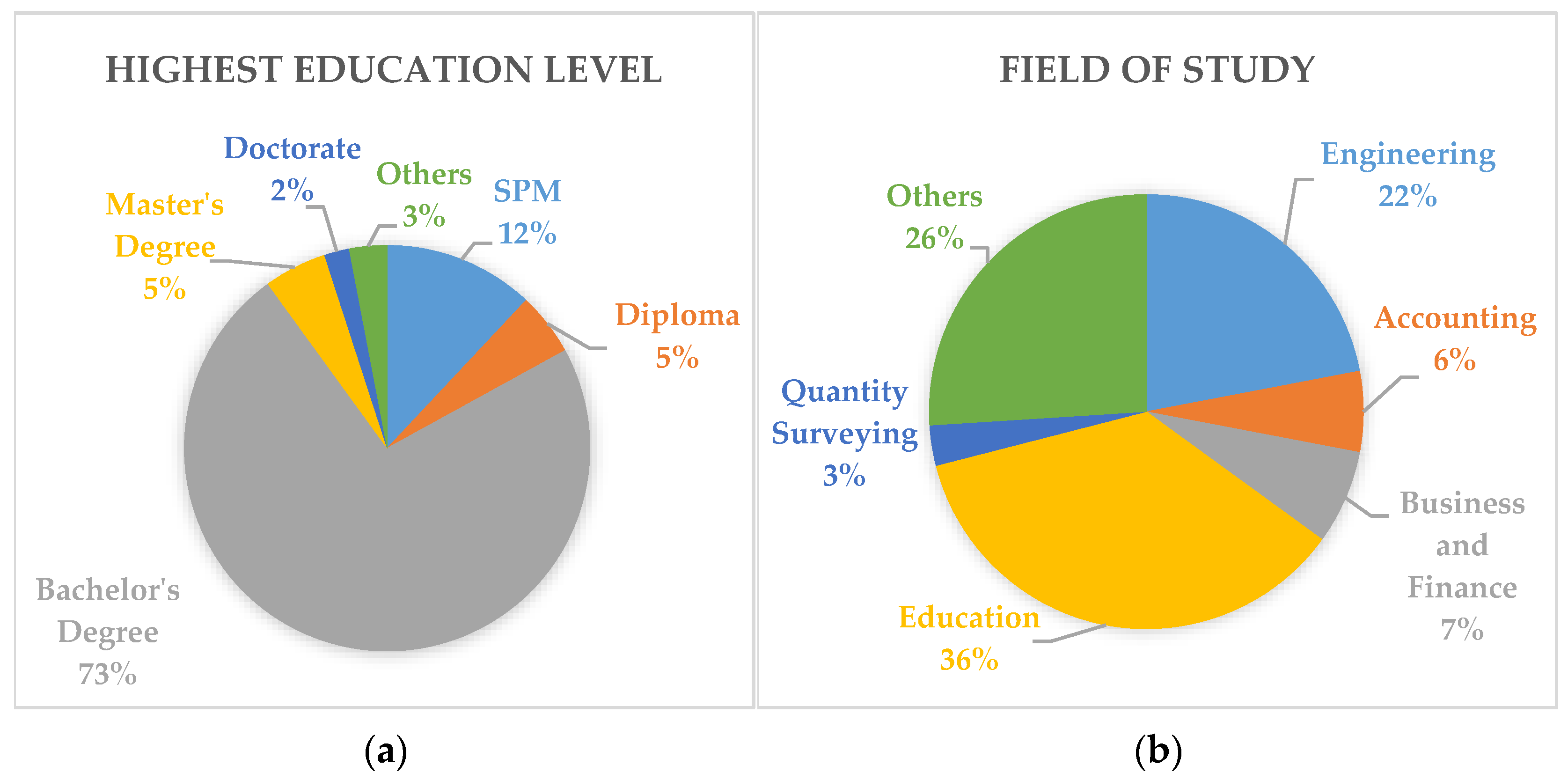
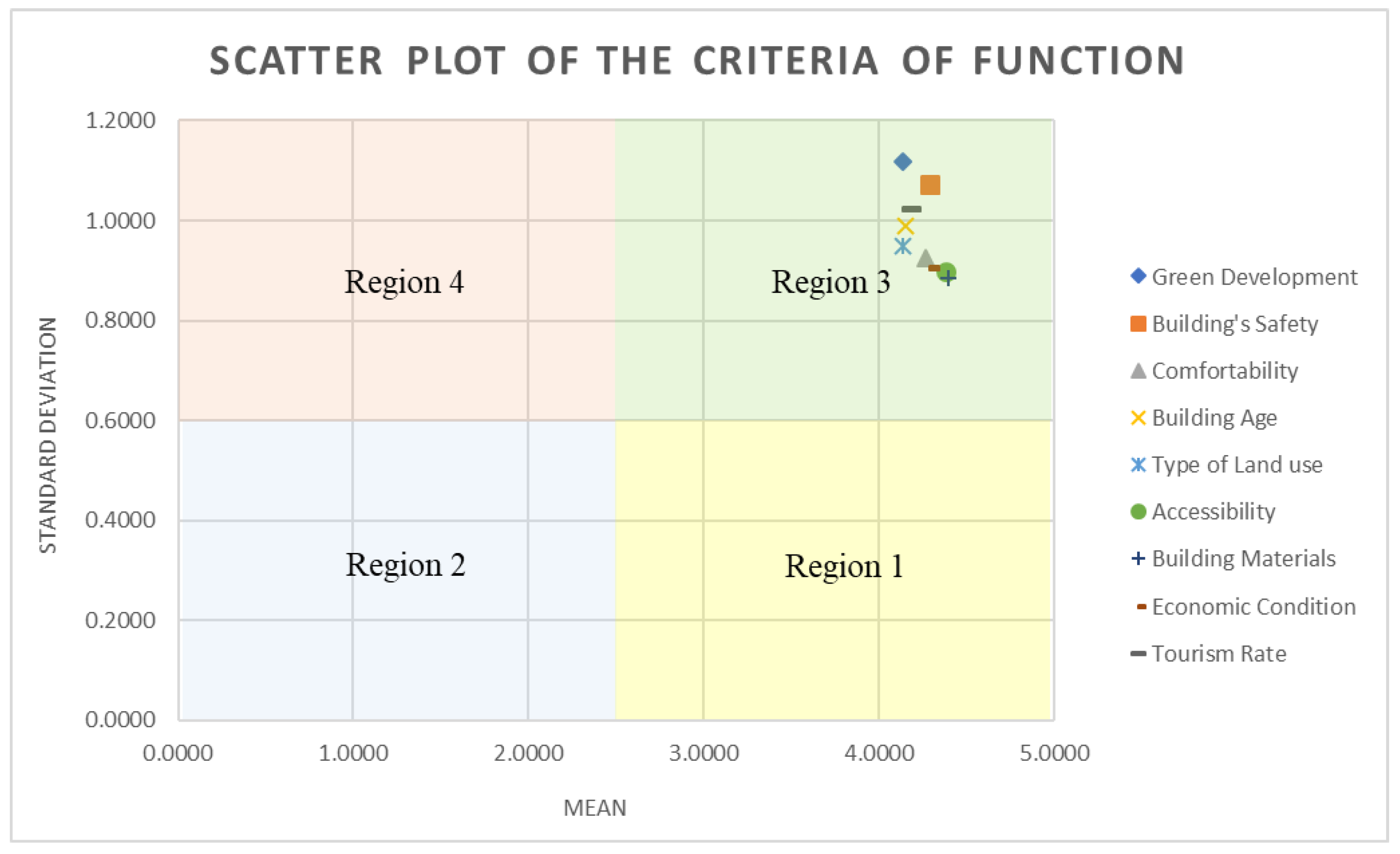

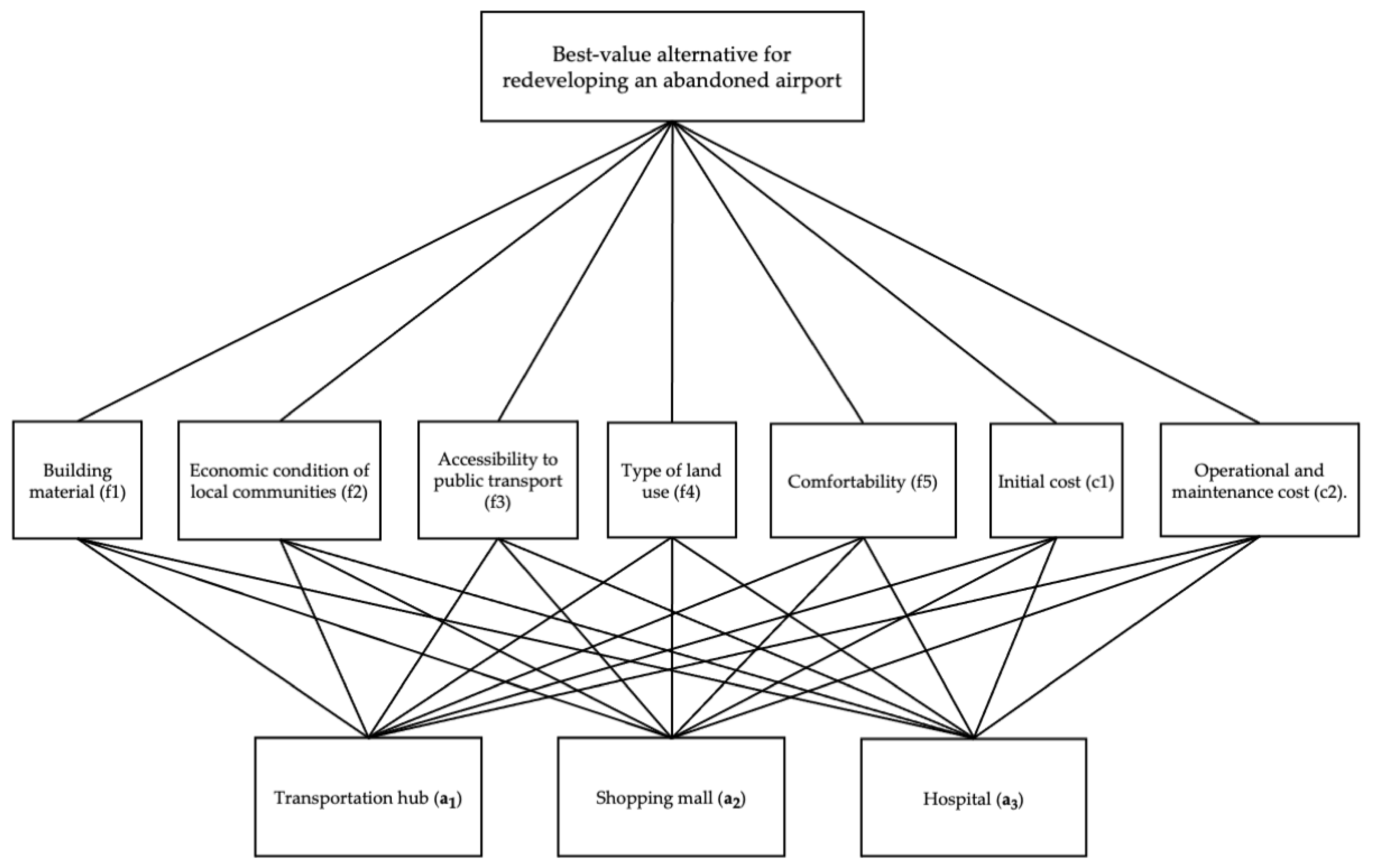
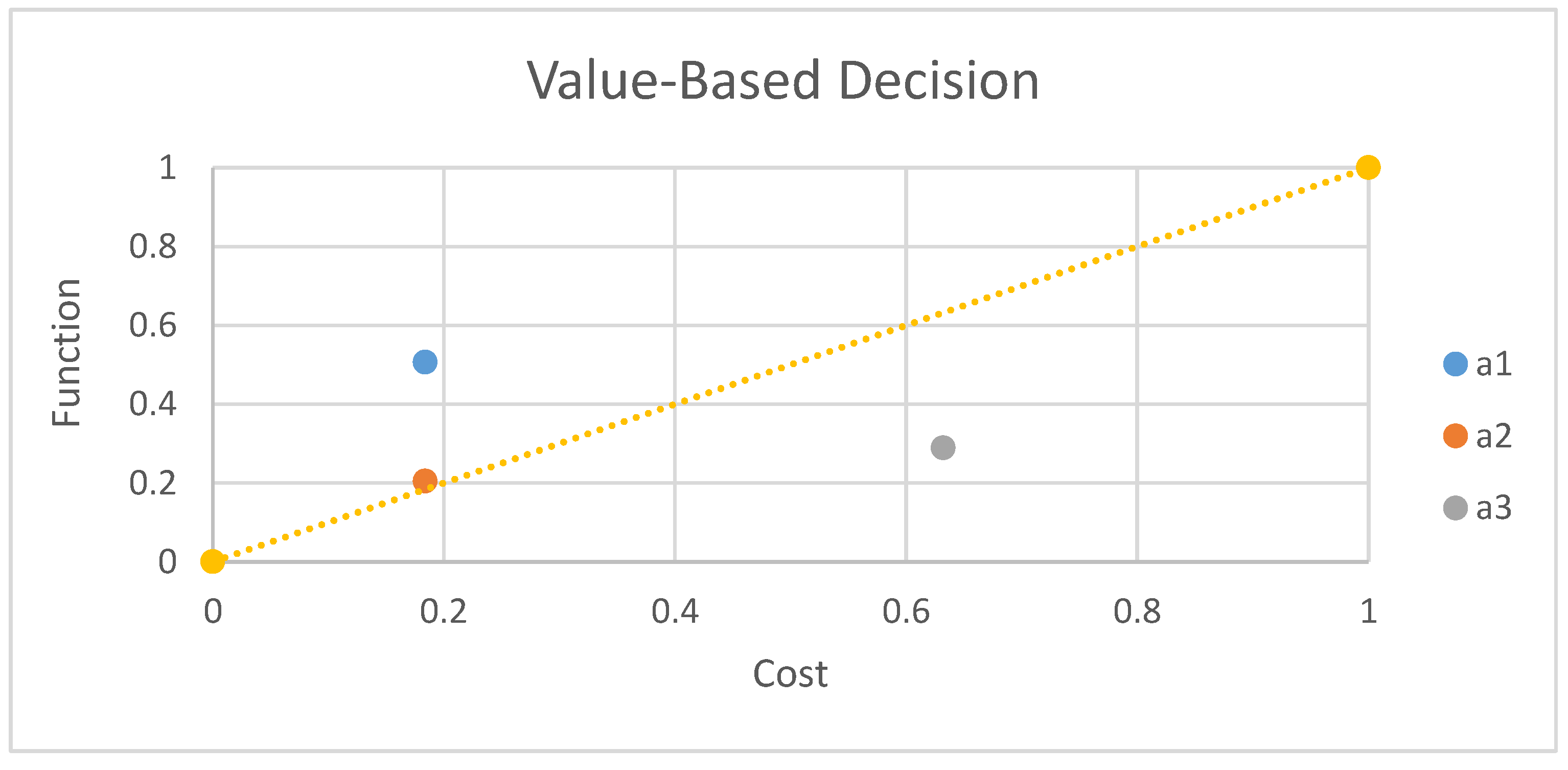
| Criteria | Justification | Sub-Criteria | Source |
|---|---|---|---|
| Economic | Redevelopment is vital to enhance the capability of building to improve the land value, thus, economic criteria are considered. The previous study showed different main considerations of the criteria under the economic rubric. | Investments | [4] |
| Net present value | [4] | ||
| Payback period | [4] | ||
| Profitability | [4,25,26] | ||
| Rental prices/property values | [15,28] | ||
| Depreciation and interest rate | [24] | ||
| Market volatility | [24] | ||
| Tax incentive | [25] | ||
| Gross operating surplus | [28] | ||
| Environmental | The environmentally friendly building is vital for the sustainable living of occupants and reduces the negative impacts on the environment. It was found that some criteria need to be considered. | Energy efficiency by class | [31,32] |
| Carbon dioxide emissions | [4,27,33] | ||
| Waste prevention | [4] | ||
| Green development | [25,30,34] | ||
| Type of contamination | [25] | ||
| Total energy use | [28] | ||
| Stormwater pollutant loading | [28] | ||
| Total water demand | [28] | ||
| Technological | Previous studies found that some technological criteria also need to be considered in supporting the redevelopment project to be effective and efficient in reaching the goals. | Project preparation and coordination | [4] |
| Construction work duration | [4,30] | ||
| Level of service/safety/comfort | [16] | ||
| Building lifetime/age | [4,15,24,26] | ||
| Building adaptation to current needs | [28] | ||
| Location | [7,26,35] | ||
| Floor-to-area ratio/floor level | [15,26,29] | ||
| Land use | [28] | ||
| Connectivity | [16,28,29] | ||
| Building materials | [15,29] | ||
| Social | During the literature review, it was also found that social factors are necessary, whereby some of the criteria support the improvement of economic development. | Households in poverty | [28] |
| Population in zero car households | [28] | ||
| Tourism rate | [30] | ||
| Physical activity | [25] |
| No. | Criteria Required for Redeveloping The Abandoned Airport | Expert (A) | Expert (B) |
|---|---|---|---|
| 1. | Green development | Strongly agree | Agree |
| 2. | Design complexities | Disagree | Agree |
| 3. | The time required for the construction work | Neutral | Neutral |
| 4. | Building safety | Agree | Neutral |
| 5. | Comfortability | Neutral | Agree |
| 6. | Building age | Agree | Agree |
| 7. | Location | Disagree | Disagree |
| 8. | Floor-to-area ratio and floor level | Disagree | Disagree |
| 9. | Type of land use | Strongly agree | Strongly agree |
| 10. | Accessibility to public transport | Agree | Agree |
| 11. | Building materials | Neutral | Strongly agree |
| 12. | The economic condition of the local communities | Agree | Agree |
| 13. | The capability of the property to attract tourists | Neutral | Agree |
| 14. | Ability to facilitate outdoor activities by the local communities | Disagree | Agree |
| The suggestion of alternatives for redeveloping the abandoned airport. |
|
| |
|
| ||
|
|
| Criteria | Mean | Standard Deviation | Ranking |
|---|---|---|---|
| Green development | 4.1395 | 1.1184 | 9 |
| Building safety | 4.2907 | 1.0723 | 8 |
| Comfortability | 4.2674 | 0.9258 | 4 |
| Building age | 4.1512 | 0.9884 | 6 |
| Type of land use | 4.1395 | 0.9476 | 5 |
| Accessibility to public transport | 4.3837 | 0.8966 | 2 |
| Building materials | 4.3953 | 0.8849 | 1 |
| The economic condition of local communities | 4.2907 | 0.9057 | 3 |
| Ability to improve tourism rate | 4.1860 | 1.0234 | 7 |
| Respondents | Years of Work Experience | Occupation | Job Title |
|---|---|---|---|
| 1 | 16–20 years | Developer | Director |
| 2 | 16–20 years | Politician | Member of Parliament |
| 3 | Less than 5 years | Contractor | Project Coordinator |
| 4 | More than 20 years | Contractor | Director |
| 5 | More than 20 years | Developer | Director |
| Criteria | Ranking | Weightage | Transportation Hub (a1) | Shopping Mall (a2) | Hospital (a3) | |||
|---|---|---|---|---|---|---|---|---|
| f1 | 4th | 0.06124 | 0.23179 | 0.01420 | 0.70028 | 0.04289 | 0.06793 | 0.00416 |
| f2 | 2nd | 0.24571 | 0.07870 | 0.01934 | 0.69444 | 0.17063 | 0.22685 | 0.05574 |
| f3 | 3rd | 0.14248 | 0.72640 | 0.10350 | 0.06189 | 0.00882 | 0.21171 | 0.03016 |
| f4 | 1st | 0.51713 | 0.23353 | 0.12076 | 0.70136 | 0.36270 | 0.06511 | 0.03367 |
| f5 | 5th | 0.03344 | 0.25383 | 0.00849 | 0.66186 | 0.02213 | 0.08431 | 0.00282 |
| Sum | 0.26628 | 0.60717 | 0.12655 | |||||
| Ranking of Alternatives | 2nd | 1st | 3rd | |||||
| Criteria | Ranking | Weightage | Transportation Hub (a1) | Shopping Mall (a2) | Hospital (a3) | |||
|---|---|---|---|---|---|---|---|---|
| f1 | 4th | 0.08821 | 0.67939 | 0.05993 | 0.24143 | 0.02130 | 0.07918 | 0.00698 |
| f2 | 1st | 0.59137 | 0.71164 | 0.42084 | 0.22071 | 0.13052 | 0.06765 | 0.04001 |
| f3 | 3rd | 0.12761 | 0.69010 | 0.08806 | 0.24465 | 0.03122 | 0.06525 | 0.00833 |
| f4 | 2nd | 0.15247 | 0.71164 | 0.10850 | 0.22071 | 0.03365 | 0.06765 | 0.01031 |
| f5 | 5th | 0.04035 | 0.70181 | 0.02832 | 0.10097 | 0.00407 | 0.19722 | 0.00796 |
| Sum | 0.70565 | 0.22076 | 0.07359 | |||||
| Ranking of Alternatives | 1st | 2nd | 3rd | |||||
| Criteria | Ranking | Weightage | Transportation Hub (a1) | Shopping Mall (a2) | Hospital (a3) | |||
|---|---|---|---|---|---|---|---|---|
| f1 | 3rd | 0.12476 | 0.72330 | 0.09024 | 0.07081 | 0.00883 | 0.20589 | 0.02569 |
| f2 | 1st | 0.56517 | 0.70768 | 0.39996 | 0.08346 | 0.04717 | 0.20886 | 0.11804 |
| f3 | 2nd | 0.20462 | 0.70144 | 0.14353 | 0.08532 | 0.01746 | 0.21324 | 0.04363 |
| f4 | 4th | 0.07713 | 0.64339 | 0.04963 | 0.07377 | 0.00569 | 0.28284 | 0.02182 |
| f5 | 5th | 0.02833 | 0.52370 | 0.01483 | 0.17211 | 0.00487 | 0.30420 | 0.00862 |
| Sum | 0.69818 | 0.08403 | 0.21779 | |||||
| Ranking of alternatives | 1st | 3rd | 2nd | |||||
| Criteria | Ranking | Weightage | Transportation Hub (a1) | Shopping Mall (a2) | Hospital (a3) | |||
|---|---|---|---|---|---|---|---|---|
| f1 | 3rd | 0.14295 | 0.21137 | 0.03022 | 0.05294 | 0.00757 | 0.73569 | 0.10517 |
| f2 | 2nd | 0.24601 | 0.21137 | 0.05200 | 0.05294 | 0.01302 | 0.73569 | 0.18099 |
| f3 | 1st | 0.50294 | 0.22116 | 0.11123 | 0.05151 | 0.02591 | 0.72733 | 0.36580 |
| f4 | 4th | 0.07990 | 0.23659 | 0.01890 | 0.05592 | 0.00447 | 0.70750 | 0.05653 |
| f5 | 5th | 0.02820 | 0.22673 | 0.00639 | 0.05751 | 0.00162 | 0.71577 | 0.02019 |
| Sum | 0.21875 | 0.05259 | 0.72867 | |||||
| Ranking of Alternatives | 2nd | 3rd | 1st | |||||
| Criteria | Ranking | Weightage | Transportation Hub (a1) | Shopping Mall (a2) | Hospital (a3) | |||
|---|---|---|---|---|---|---|---|---|
| f1 | 1st | 0.50710 | 0.70695 | 0.35850 | 0.05760 | 0.02921 | 0.23545 | 0.11940 |
| f2 | 3rd | 0.13636 | 0.23545 | 0.03211 | 0.05760 | 0.00785 | 0.70695 | 0.09640 |
| f3 | 4th | 0.07695 | 0.70098 | 0.05394 | 0.06296 | 0.00484 | 0.23606 | 0.01816 |
| f4 | 2nd | 0.25111 | 0.71577 | 0.17974 | 0.05751 | 0.01444 | 0.22673 | 0.05693 |
| f5 | 5th | 0.02848 | 0.70695 | 0.02013 | 0.05760 | 0.00164 | 0.23545 | 0.00670 |
| Sum | 0.64441 | 0.05799 | 0.29760 | |||||
| Ranking of Alternatives | 1st | 3rd | 2nd | |||||
| f1 | f2 | f3 | f4 | f5 | Sum | Ranking | |
|---|---|---|---|---|---|---|---|
| Transportation hub (a1) | 0.11061 | 0.18485 | 0.10005 | 0.09551 | 0.01563 | 0.50665 | 1st |
| Shopping mall (a2) | 0.02196 | 0.07384 | 0.01765 | 0.08419 | 0.00687 | 0.20451 | 3rd |
| Hospital (a3) | 0.05228 | 0.09823 | 0.09322 | 0.03585 | 0.00926 | 0.28884 | 2nd |
| c1 | c2 | Sum | Loss | Ranking | |
|---|---|---|---|---|---|
| Transportation hub (a1) | 0.428571 | 0.444444 | 0.873016 | 0.253968 | 1st |
| Shopping mall (a2) | 0.428571 | 0.444444 | 0.873016 | 0.253968 | 1st |
| Hospital (a3) | 0.142857 | 0.111111 | 0.253968 | 0.873016 | 3rd |
| Cost | Function | Value | Ranking | |
|---|---|---|---|---|
| Transportation hub (a1) | 0.183908 | 0.50665 | 2.754932 | 1st |
| Shopping mall (a2) | 0.183908 | 0.20451 | 1.112002 | 2nd |
| Hospital (a3) | 0.632184 | 0.28884 | 0.456892 | 3rd |
| Function | Average Weightage | Ranking | Sources |
|---|---|---|---|
| Building materials (f1) | 0.18485 | 4th | Building materials are important in deciding alternatives for project redevelopment to ensure green development [15]. |
| The economic condition of local communities (f2) | 0.35692 | 1st | The socio-economic factor is significantly correlated with project redevelopment as the economic condition can increase redevelopment brings [25,28]. |
| Accessibility to public transport (f3) | 0.21092 | 3rd | Accessibility of the project site is the key determinant for project redevelopment [15]. |
| Type of land use (f4) | 0.21555 | 2nd | Type of land use is one of the most important factors affecting project redevelopment as it can affect property values [15,28]. |
| Comfortability (f5) | 0.03176 | 5th | Comfortability of the building such as control and indoor quality is important for sustainable project redevelopment [27,32]. |
Publisher’s Note: MDPI stays neutral with regard to jurisdictional claims in published maps and institutional affiliations. |
© 2021 by the authors. Licensee MDPI, Basel, Switzerland. This article is an open access article distributed under the terms and conditions of the Creative Commons Attribution (CC BY) license (https://creativecommons.org/licenses/by/4.0/).
Share and Cite
Xian, B.W.X.; Rahmawati, Y.; Al-Aidrous, A.-H.M.H.; Utomo, C.; Wan Abdullah Zawawi, N.A.; Raflis. Value-Based Decision to Redevelop Transportation Facilities: A Case Study of an Abandoned Airport. Sustainability 2021, 13, 4959. https://doi.org/10.3390/su13094959
Xian BWX, Rahmawati Y, Al-Aidrous A-HMH, Utomo C, Wan Abdullah Zawawi NA, Raflis. Value-Based Decision to Redevelop Transportation Facilities: A Case Study of an Abandoned Airport. Sustainability. 2021; 13(9):4959. https://doi.org/10.3390/su13094959
Chicago/Turabian StyleXian, Beryl Wong Xin, Yani Rahmawati, Al-Hussein Mohammed Hassan Al-Aidrous, Christiono Utomo, Noor Amila Wan Abdullah Zawawi, and Raflis. 2021. "Value-Based Decision to Redevelop Transportation Facilities: A Case Study of an Abandoned Airport" Sustainability 13, no. 9: 4959. https://doi.org/10.3390/su13094959
APA StyleXian, B. W. X., Rahmawati, Y., Al-Aidrous, A.-H. M. H., Utomo, C., Wan Abdullah Zawawi, N. A., & Raflis. (2021). Value-Based Decision to Redevelop Transportation Facilities: A Case Study of an Abandoned Airport. Sustainability, 13(9), 4959. https://doi.org/10.3390/su13094959










